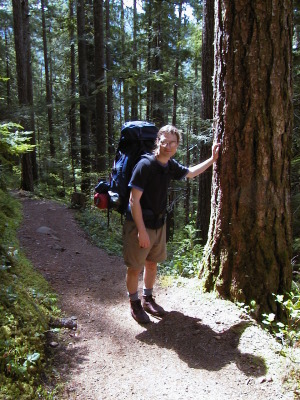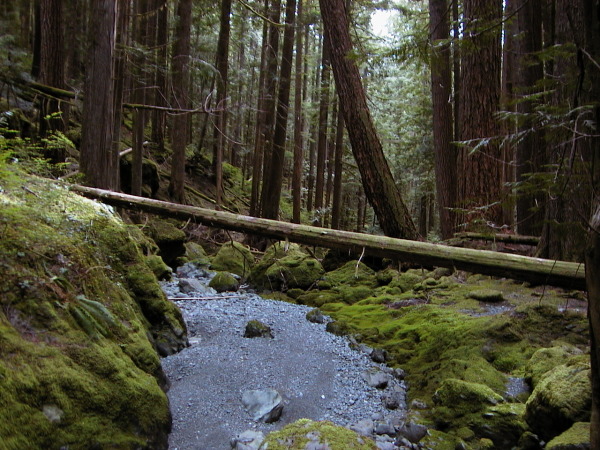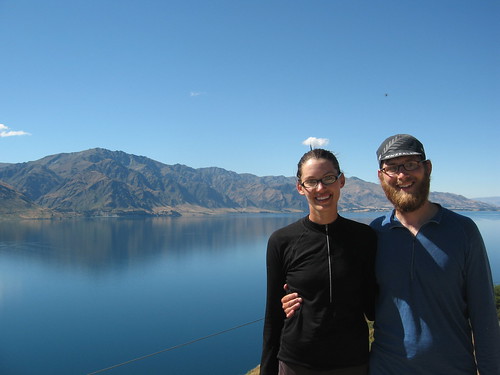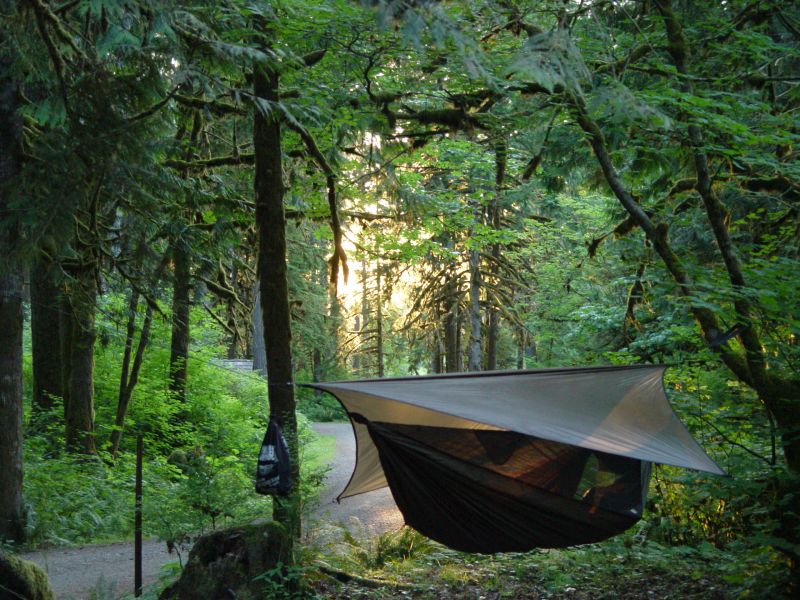Lightweight camping equipment — what a difference
Christine and I are going hiking this weekend to Lena Lake in the Olympic National Forest. It is a nice early season hike with good camping and nice hiking beyond the campground. Last time I really loved the contrast between the dry river bed and the mossy boulders. The old digital camera that took these photos doesn’t do it justice compared to the mental images in my head. Christine hasn’t gone backpacking in many years and this might have been our last backpacking destination 7 years ago. I’ve gone on and off over the last 10 years with other friends. I’m excited that the two of us are finally going backpacking again.
 It’s interesting for me to compare the weight of our basic equipment and how it is has changed in those 7 years. I still do a good amount of bike touring and backpacking with friends and camparound 10 nights per year.In the past 5 years almost all of mygear has changed and I’ve bought it with an eye for lightweight and compactness. On our last trip to Lena Lake we used a Sierra Designs Alpha CD tent that weighed 9lbs with groundcloth, it has been replaced by a Tarptent Rainshadow II that weighs 3lbs with ground cloth. My old backpack (a huge Kelty internal frame model) weighed about 8lbs too and has been replaced by a Mountainsmith Ghost at under 3lbs. The sleeping pad weight is about the same, but a 1″ thick Thermarest has been replaced with a 2.5″ thick Exped Downmat. Our synthetic and bulky 3 or 4lb sleeping bags have been replaced with sub-2lb down bags.
It’s interesting for me to compare the weight of our basic equipment and how it is has changed in those 7 years. I still do a good amount of bike touring and backpacking with friends and camparound 10 nights per year.In the past 5 years almost all of mygear has changed and I’ve bought it with an eye for lightweight and compactness. On our last trip to Lena Lake we used a Sierra Designs Alpha CD tent that weighed 9lbs with groundcloth, it has been replaced by a Tarptent Rainshadow II that weighs 3lbs with ground cloth. My old backpack (a huge Kelty internal frame model) weighed about 8lbs too and has been replaced by a Mountainsmith Ghost at under 3lbs. The sleeping pad weight is about the same, but a 1″ thick Thermarest has been replaced with a 2.5″ thick Exped Downmat. Our synthetic and bulky 3 or 4lb sleeping bags have been replaced with sub-2lb down bags.
As a result the weight of a my setup (backpack, tent, sleeping bag, pad) is 9lbs. In 2007 I think that same basic setup was over 20lbs. That is a significant difference. The weight isn’t the only difference, the volume of gear is smaller (mostly due to the lighter weight tent and down sleeping bag). In the photo at the right (taken at Lena Lake) my backpack towers up to my head — the smaller one barely reaches my shoulders.
Now I just need to avoid making up for it by carrying too much food and camera gear– my normal failures.
























